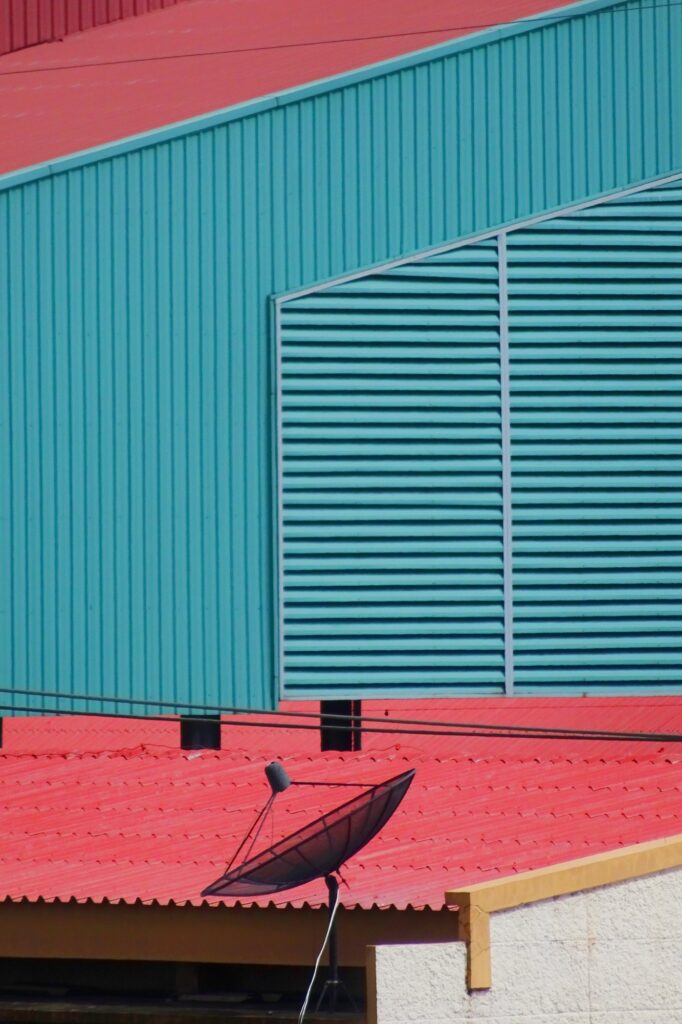Embarking on a roof painting project is a transformative journey that elevates the aesthetics and protection of your home. To ensure a seamless and successful experience, it’s essential to navigate the process with precision and care. Here are the top 5 do’s and don’ts to guide you in mastering the art of painting your roof.
The Do’s
Conduct Thorough Roof Inspection
Why Before reaching for the paintbrush, conduct a comprehensive inspection of your roof. Look for signs of damage, such as leaks, cracked shingles, or rust. Addressing these issues before painting ensures a solid foundation for the paint to adhere and contributes to the long-term success of the project.
How Carefully inspect the entire roof surface, paying attention to areas around vents, chimneys, and gutters. Repair any damaged or compromised sections, and ensure that the roof is structurally sound before proceeding with painting.

Invest in Quality Materials
Why The quality of materials you use directly impacts the durability and effectiveness of your roof paint job. Investing in high-quality paint and coatings designed for roofs ensures resilience against weather elements, UV exposure, and the test of time.
How Choose paint specifically formulated for the material of your roof, whether it’s metal, asphalt shingles, or another type. Opt for brands known for their durability and weather resistance. Quality materials contribute to a professional finish that lasts.
Proper Surface Preparation
Why Proper preparation is the key to a successful roof painting project. Thoroughly cleaning the surface, addressing repairs, and applying primer create an ideal canvas for paint application. Skipping these steps can lead to uneven coverage, poor adhesion, and a compromised finish.
How Clean the roof surface using a pressure washer or appropriate cleaning solutions to remove dirt, algae, and debris. Address any repairs needed and apply a primer suitable for your roof material to enhance paint adhesion.
Consider Weather Conditions
Why Weather conditions play a crucial role in the success of your roof painting project. Painting under favourable weather conditions ensures proper drying, adhesion, and overall performance of the paint. Avoiding extreme heat, rain, or high humidity is essential.
How Choose a time with mild temperatures, clear skies, and minimal humidity for your roof painting project. Check weather forecasts and plan the project during a period with stable weather conditions.
Do Prioritise Safety Measures
Why Roof painting involves working at heights, presenting inherent safety risks. Prioritizing safety measures ensures a secure working environment and minimizes the risk of accidents. Safety harnesses, stable ladders, and appropriate safety gear are essential components of a safe roof painting project.
How Use stable ladders placed on level ground, wear appropriate safety gear such as non-slip footwear and safety harnesses, and follow all recommended safety protocols. If you’re uncomfortable with heights or lack safety equipment, consider hiring a professional.
The Don’ts
Don’t Rush the Project
Why Patience is a virtue in roof painting. Rushing the project, especially during the application phase, can lead to streaks, uneven coverage, and missed spots. Taking your time ensures an even and professional-looking finish.
How Follow a systematic approach to painting, allowing sufficient drying time between coats. Take breaks as needed to maintain focus and precision. A patient and deliberate process yields superior results.
Don’t Neglect Proper Ventilation
Why Adequate ventilation during the painting process is crucial for the proper drying and curing of the paint. Neglecting ventilation can result in prolonged drying times, uneven application, and a compromised finish.
How Ensure proper airflow by choosing a day with mild weather conditions. If possible, use fans to enhance ventilation during and after the painting process. Good ventilation contributes to a smooth and effective paint job.
Don’t Overlook Safety Measures
Why Safety should never be overlooked when working at heights. Neglecting safety measures can lead to accidents and injuries. Avoiding the use of safety gear or unstable ladders poses significant risks.
How Prioritise safety at all times. Use stable ladders, wear appropriate safety gear, and follow safety protocols. If you’re uncertain about safety measures, seek professional advice or consider hiring a professional roof painter.
Don’t Skimp on Cleaning and Repairs
Why Neglecting thorough cleaning and necessary repairs before painting compromises the integrity of the paint job. Dirt, debris, or damaged sections can affect paint adhesion and lead to premature peeling or fading.
How Invest time in cleaning the roof thoroughly before painting. Address any repairs needed, including fixing leaks, replacing damaged shingles, or treating rust. A well-prepared surface ensures a successful paint application.
Don’t Use the Wrong Paint Type
Why Type Matters Using the wrong type of paint for your roof can be a costly mistake. Ensure you choose a paint specifically designed for the material of your roof. Using an incompatible paint type may result in poor adhesion, premature peeling, or a finish that doesn’t withstand weathering.
How Talk to the team at your local specialist paint store and explain your specific situation. Allow them to run you through your options and help you decide on the best fit for you project!
Conclusion
Embarking on a roof painting project is a transformative endeavour that can elevate the aesthetic appeal and longevity of your home. By adhering to these top 5 do’s and don’ts, you pave the way for a seamless, visually stunning, and enduring finish. Approach your roof painting with a blend of precision, care, and strategic decision-making, ensuring that your home’s crown receives the attention it deserves.
